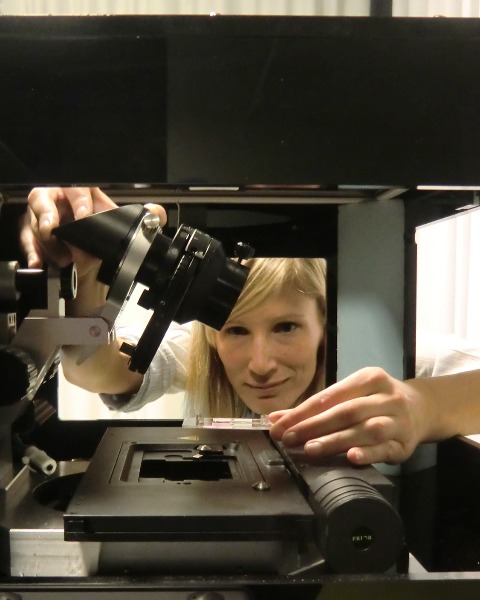Cellular Technologies (Room 210A)
Innovation Award
A novel gut-on-chip model recreating physiological 3D peristalsis for disease modelling and efficacy testing
Monday, February 5, 2024
4:00 PM - 4:30 PM EST
Room/Location: 210A
Sponsored By
.png)

Nina D. Hobi, Dr. (he/him/his)
AlveoliX AG, Swiss Organs-on-Chip Innovation, Bern, Switzerland
Abstract: A key element for the uptake of nutrients and orally administered drugs is the mechanically active human gut. To preserve in vivo phenotypes and predict physiological cell responses, replicating biomechanical stimuli is essential. Therefore, in the gut context, recapitulating 3D peristalsis to simulate in vivo conditions is of high relevance. However, its complex nature and dynamic variations during the day, has made it difficult to recapitulate in vitro.
In this study, we have developed a novel gut-on-chip model using the AXBarrier-on-chip system. The gut epithelial barrier was recreated using the validated gut cell lines Caco-2 and HT29 that represent enterocyte-like and goblet-like cells respectively. Cell models were cultured as mono- and co-cultures on-chip on the AX12’s ultrathin porous membrane and on traditional Transwell® inserts as a reference. To reproduce in vivo-like peristalsis, 3D stretch was applied using the AXBarrier-on-chip system considering physiological variations during the daytime (active) and nighttime (resting).
The gut models on-chip and Transwell® were characterized by tight barrier formation (Trans barrier Electrical Resistance, TER). 3D peristaltic stimulation on-chip resulted in barrier functionality closer to in vivo parameters (TER, permeability assay), which is essential to replicate relevant molecule transport across the barrier for PK modeling. Moreover, on-chip conditions fostered cell differentiation and localized F-actin filaments indicative of cell polarization and increased gene expression of typical gut markers (ANPEP, LYZ, MUC2) compared to the static Transwell® platform. We then further developed a disease model by simulating the proinflammatory context associated with severe gut disorders such as inflammatory bowel disease. For that, we treated our healthy model with a proinflammatory cytokines cocktail and evaluated the impact on barrier function and secretion of proinflammatory cytokines. Our results showed that 3D peristaltic stretched cells demonstrate a higher sensitivity resulting in increased inflammation and barrier weakening upon injury compared to the static model. Additionally, we evaluated the disease model for drug efficacy testing, by adding rescuing compounds. Our results recapitulated different compound efficacies and proved the benefit of the model within the drug development process.
In summary, we successfully developed a dynamic gut-on-chip model reproducing physiological 3D peristalsis with in vivo-like barrier parameters and increased sensitivity to proinflammatory triggers. We were able to represent hallmarks of a diseased state such as inflammatory bowel disease and proved the model’s usefulness for drug efficacy assessment. Therefore, this model represents an important step forward for more predictive toxicity evaluation, disease modeling, PK studies, drug safety and efficacy assessment.
In this study, we have developed a novel gut-on-chip model using the AXBarrier-on-chip system. The gut epithelial barrier was recreated using the validated gut cell lines Caco-2 and HT29 that represent enterocyte-like and goblet-like cells respectively. Cell models were cultured as mono- and co-cultures on-chip on the AX12’s ultrathin porous membrane and on traditional Transwell® inserts as a reference. To reproduce in vivo-like peristalsis, 3D stretch was applied using the AXBarrier-on-chip system considering physiological variations during the daytime (active) and nighttime (resting).
The gut models on-chip and Transwell® were characterized by tight barrier formation (Trans barrier Electrical Resistance, TER). 3D peristaltic stimulation on-chip resulted in barrier functionality closer to in vivo parameters (TER, permeability assay), which is essential to replicate relevant molecule transport across the barrier for PK modeling. Moreover, on-chip conditions fostered cell differentiation and localized F-actin filaments indicative of cell polarization and increased gene expression of typical gut markers (ANPEP, LYZ, MUC2) compared to the static Transwell® platform. We then further developed a disease model by simulating the proinflammatory context associated with severe gut disorders such as inflammatory bowel disease. For that, we treated our healthy model with a proinflammatory cytokines cocktail and evaluated the impact on barrier function and secretion of proinflammatory cytokines. Our results showed that 3D peristaltic stretched cells demonstrate a higher sensitivity resulting in increased inflammation and barrier weakening upon injury compared to the static model. Additionally, we evaluated the disease model for drug efficacy testing, by adding rescuing compounds. Our results recapitulated different compound efficacies and proved the benefit of the model within the drug development process.
In summary, we successfully developed a dynamic gut-on-chip model reproducing physiological 3D peristalsis with in vivo-like barrier parameters and increased sensitivity to proinflammatory triggers. We were able to represent hallmarks of a diseased state such as inflammatory bowel disease and proved the model’s usefulness for drug efficacy assessment. Therefore, this model represents an important step forward for more predictive toxicity evaluation, disease modeling, PK studies, drug safety and efficacy assessment.

.png)
